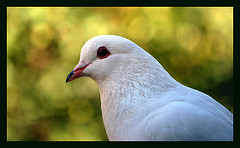Of pigeons, rats and SMS


So what?
I love this. The interesting thing about it is that, unlike their predecessors, Professor da Costa's pigeons (aka "flying rats") needn't be trained and aren't expected to change their behavior: They can go about their usual important business of liberally resurfacing statues, bridges, sidewalks and the occasional passer-by without being distracted by additional responsibilities. Related ideas: Migratory birds (geese, for example, which could carry a lot more equipment than pigeons) might report air quality data over much larger swathes of territory, while country-dwelling birds could (perhaps using audio sensors and really good digital signal processor algorithms) track the number of frog croaks in the vicinity. (Frogs are dying left and right all over the world and nobody knows why. Pesticides? Global warming? Rap? They may be a sort of amphibious "canary in the coal mine" for the earth--it's probably better not to think about it.)
Another interesting aspect is the inevitable smaller-faster-cheaper curve that the kit's components will follow, and the new zoological (and even, perhaps, "insectological") vistas the technology opens up. Cockroaches and rats, for example, are in an excellent position to report all sorts of data: mostly, granted, about sewer pipes and the undersides of refrigerators, but that could be very important in certain contexts.
In any case, Professor da Costa's work may herald a whole new way for humanity to exploit its fellow travelers on Spaceship Earth, and I for one am in favor of it. Or maybe not: It might not be the healthiest idea to release several zillion nickel metal hydride (Poisonous!? Say not so!) batteries into the wild--we might wind up with even more frog blood on our hands. It's never simple, is it?